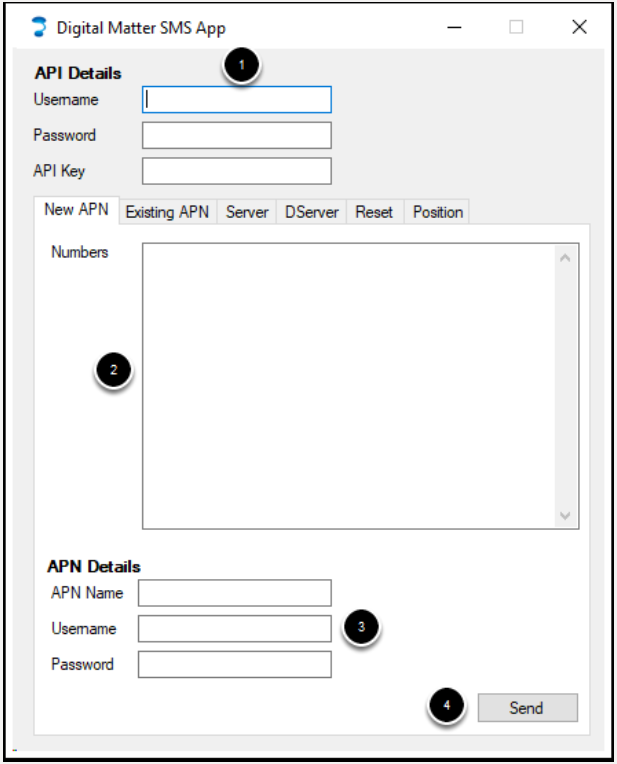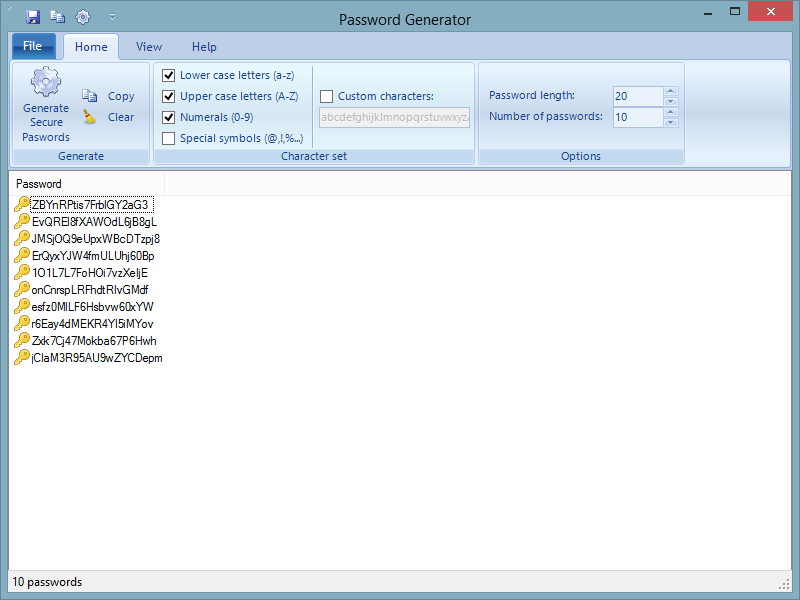
- #AUTOMATICALLY GENERATE PASSWORDS GENERATOR#
- #AUTOMATICALLY GENERATE PASSWORDS CODE#
- #AUTOMATICALLY GENERATE PASSWORDS PASSWORD#
#AUTOMATICALLY GENERATE PASSWORDS PASSWORD#
The password is generated from letters(upper and lower cases), numbers (0-9), and special characters.
#AUTOMATICALLY GENERATE PASSWORDS GENERATOR#
The logic for password generation and validation can be broken down into a few steps. Password Generator in Microsoft Edge is a game-changer. Click on the Lastpass button in your browser, go to 'Generate Secure Password', click the dropdown button on the password field. Ok now, let me work you through the implementation of my thought pattern.įirst, I created a form with takes in the user's last name, first name, and password(which could be generated or customized) If you just generated it, but for some reason not stored as a site in Lastpass after you registered with the site, there is a way to retrieve it, if you used the browser extension.

The password must not contain the user's name (neither first nor last name) Must contain Arabic numerals(0 through 9) Must contain lowercase letters(a through z) Must contain uppercase letters(A through Z) The password must contain characters that fall within these The password must be of at least 8 characters These are just some criteria I wanted the password to validate: I tried to think of a structure I wanted the login form to follow (even though it was just a signup page) but while working I had to redesign my plan several times. I first wrote a password generator in Java then thought "Well, since I'm learning js." If ( includeNumbers) charCodes = charCodes.Can I learn kung fu without sparring? Are you learning javascript as I am? If you are great! You see, this is the first project I am single-handedly doing since I started learning javascript. If ( includeSymbols) charCodes = charCodes. If ( includeUppercase) charCodes = charCodes. The symbols start at 33 and increase up to 47 and then continue at 58. This function is a method in JavaScript which allows the concatenation of strings and arrays. Use the concat function to combine them into a single array. But generating the character codes for the symbols is different because they are allocated in the various places of the ASCII table. You will also do this for the lowercase characters and numbers. For the uppercase codes, you will pass the low of 65, which is the value of uppercase A and the high value of 90, the uppercase Z as you can recall from the ASCII table. Next, let’s work on the character codes that we’ll use to form the randomly generated password. getElementById( "passwordGeneratorForm") getElementById( "generate") Ĭonst form = document.

getElementById( "symbols") Ĭonst generatebtn = document. getElementById( "numbers") Ĭonst symbolsDOM = document. getElementById( "uppercase") Ĭonst numbersDOM = document. Get a different strong password: Tap Other Options, tap Edit Strong Password, then tap the suggested password. Edit the suggested password: Tap Other Options, tap Edit Strong Password, tap the password text field, then make your changes. getElementById( "length") Ĭonst uppercaseDOM = document. Do one of the following: Choose the suggested password: Tap Use Strong Password. getElementById( "copy") Ĭonst lengthDOM = document. getElementById( "result") Ĭonst copybtnDOM = document.
#AUTOMATICALLY GENERATE PASSWORDS CODE#
Start by selecting the different HTML DOM elements in the JavaScript using the code below:Ĭonst resultDOM = document. Writing the Javascript Select DOM elements The symbols are at various places in the image above. The lowercase begins at 97 and goes up to 122.

If you look at the uppercase A, it has an ASCII value of 65, and if you keep adding one to 65, you will get all the 26 uppercase characters. Here is the table of the ASCII characters:ĪSCII stands for American Standard Code for Information Interchange. I don’t advise you to jump straight to coding the JavaScript file without a prior understanding of the ASCII characters. This is where you will write all the CSS for the application. Now, let’s create a file and save it as layout.css. This form allows you to generate random passwords.


 0 kommentar(er)
0 kommentar(er)
